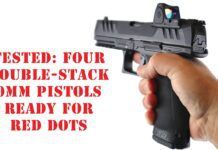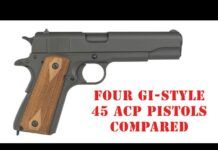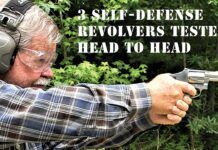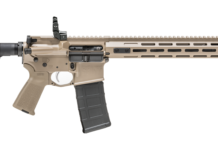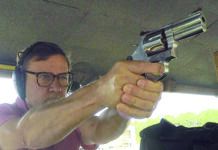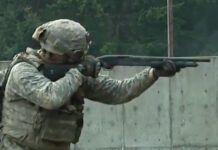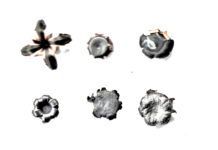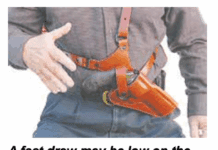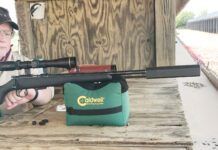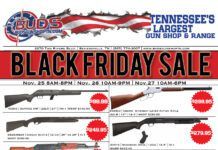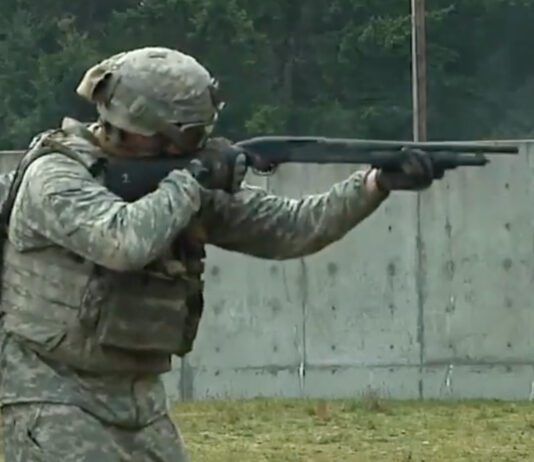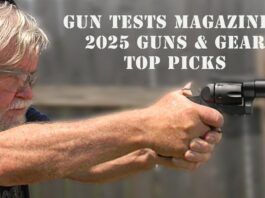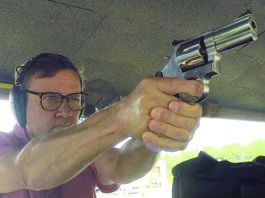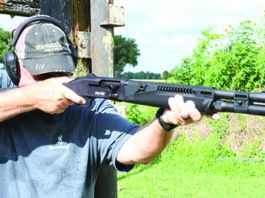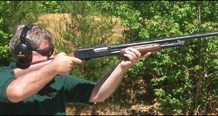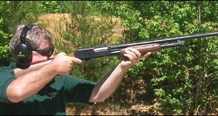Economy Pump 12 Gauges: Maverick 88 Vs. H&R Pardner
The pump action is a very popular shotgun type, mainly for its ease of operation and its ruggedness. While a self-loader may be a bit faster in trained hands, the point is debatable. Expensive autoloaders are reliable, but in the end a dirty or well-used pump is always more reliable than a dirty autoloader. We recently tested two affordable pumps-the Mossberg Maverick is a cut-down version of the Mossberg 500, and the H&R Pardner is a basic copy of the Remington 870 design beneath the humpback receiver. Our raters are familiar with the Mossberg 500 shotgun and the Remington 870, but we had to cast aside any preconceived notions of the base platforms because the Maverick and Pardner we were testing were completely different from their stablemates. They were made to sell and to offer reasonable performance. The shotguns tested had similar features, and there was little to recommend one over the other as far as the specification sheet went-even the length of pull and drop are similar. But once the shooting began, we began to form opinions on each shotgun. We took turns quickly mounting each shotgun and firing. When firing a shotgun, your eye is the rear sight and handling is everything. A rough action or problems with the hardware detract from smoothness of motion and ergonomics.We bought the guns at Academy Sports, a giant sporting chain that offers rifles, pistols, and shotguns as well as other sporting goods. We were surprised to see these two pump-action shotguns listed for less than $200 in an Academy Sports sales paper.When we saw the sale sheet in the Sunday paper, the Maverick was listed at $170 and the Pardner at $180-not much difference. However, we waited two weeks to purchase the shotguns and found that the Mavericks every day price is $170, while the Pardner was off sale and commanding $200-an 18% difference. The helpful clerk assured us that the Pardner would go back on sale within a few weeks, but we went ahead and purchased the Pardner at full price. Watch the sale sheets, but the Maverick, it seems, is always at the lower price, even when both are on sale.Our team gathered and shot the guns using 2.75-inch Winchester Super Target loads (1-ounce charge of No. 8 shot, 2.75-dram equivalent, 1180 fps muzzle velocity) and also a new steel trap load, the Winchester Xpert Game/Target load WE12GT7, a 2.75-inch 12 gauge with 11/8 ounces of No. 7s, Max dram, developing 1280 fps, according to Winchester.The trap load was heavier, but neither generated uncomfortable recoil. Both burned clean, with comparable performance in both shotguns. Heres what our testers learned about the guns:
Economy Pump 12 Gauges: Maverick 88 Vs. H&R Pardner
The pump action is a very popular shotgun type, mainly for its ease of operation and its ruggedness. While a self-loader may be a bit faster in trained hands, the point is debatable. Expensive autoloaders are reliable, but in the end a dirty or well-used pump is always more reliable than a dirty autoloader. We recently tested two affordable pumps-the Mossberg Maverick is a cut-down version of the Mossberg 500, and the H&R Pardner is a basic copy of the Remington 870 design beneath the humpback receiver. Our raters are familiar with the Mossberg 500 shotgun and the Remington 870, but we had to cast aside any preconceived notions of the base platforms because the Maverick and Pardner we were testing were completely different from their stablemates. They were made to sell and to offer reasonable performance. The shotguns tested had similar features, and there was little to recommend one over the other as far as the specification sheet went-even the length of pull and drop are similar. But once the shooting began, we began to form opinions on each shotgun. We took turns quickly mounting each shotgun and firing. When firing a shotgun, your eye is the rear sight and handling is everything. A rough action or problems with the hardware detract from smoothness of motion and ergonomics.We bought the guns at Academy Sports, a giant sporting chain that offers rifles, pistols, and shotguns as well as other sporting goods. We were surprised to see these two pump-action shotguns listed for less than $200 in an Academy Sports sales paper.When we saw the sale sheet in the Sunday paper, the Maverick was listed at $170 and the Pardner at $180-not much difference. However, we waited two weeks to purchase the shotguns and found that the Mavericks every day price is $170, while the Pardner was off sale and commanding $200-an 18% difference. The helpful clerk assured us that the Pardner would go back on sale within a few weeks, but we went ahead and purchased the Pardner at full price. Watch the sale sheets, but the Maverick, it seems, is always at the lower price, even when both are on sale.Our team gathered and shot the guns using 2.75-inch Winchester Super Target loads (1-ounce charge of No. 8 shot, 2.75-dram equivalent, 1180 fps muzzle velocity) and also a new steel trap load, the Winchester Xpert Game/Target load WE12GT7, a 2.75-inch 12 gauge with 11/8 ounces of No. 7s, Max dram, developing 1280 fps, according to Winchester.The trap load was heavier, but neither generated uncomfortable recoil. Both burned clean, with comparable performance in both shotguns. Heres what our testers learned about the guns:
McDonald Supreme Court Ruling Strikes Down Chicago Gun Ban
(GunReports.com) -- In its second major ruling on gun rights in three years, the Supreme Court Monday extended the federally protected right to keep and bear arms to all 50 states. Justice Samuel Alito wrote for the five-justice majority, saying 'the right to keep and bear arms must be regarded as a substantive guarantee, not a prohibition that could be ignored so long as the States legislated in an evenhanded manner.'
GunReports.com Video: NSSF’s Don’t Run Out of Swing
A good stance and a good setup are the foundation to good shooting. Assume a relaxed athletic stance and flex the knees to swing easily through the target. (NSSF Video)
Harris Poll: Americans Should be Allowed to Have Guns, Say Large Majorities
(GunReports.com) -- Large majorities of Americans feel that they should be allowed to have guns, a new Harris Poll shows, but ominously, pluralities of Americans favor stricter control of guns, particularly hand guns.
ATF Reverses “Transfers” of Firearms Definition After 40 Years
(GunReports.com) -- Reversing an interpretation of the Gun Control Act that has been on the books for more than four decades, ATF today posted a ruling declaring any shipment of a firearm by a manufacturer (FFL) to any agent or business (e.g., an engineering-design firm, patent lawyer, testing lab, gun writer, etc.) for a bona fide business purpose to be a 'transfer' under the Gun Control Act of 1968, according to the NSSF.
Video: Picking The Right Shotgun for Women
Video: Picking The Right Smoothbore for Women (5:46)
Video: Legend Puma (Armi Chiappa) Lever Action Shotgun, from Gun Tests Magazine (3:06)
Video: Terminator, Mummy shotgun, Legend Puma (Armi Chiappa) Lever Action Shotgun, from Gun Tests Magazine (3:06)
Taurus Releases New ‘Circuit Judge’ Shotgun/Rifle Crossover
(GunReports.com) -- The new Taurus Circuit Judge is a shotgun/rifle crossover that shoots .410 gauge 3-inch magnum shotshells, .410 2.5-inch shotshells and .45 Colt ammunition with the rifle barreled shotgun, or fire both .410 gauge 3-inch magnum shotshells and 410 2.5-inch shotshells with the smooth bore shotgun.
Crimson Trace Introduces MVF-515 Green Foregrip, $649, plus Low-Light Training Video
Crimson Trace's new modular vertical foregrip product, the MVF-515 GREEN, utilizes both a green laser and a white light in one unit. The MVF-515 GREEN provides a laser, white-light, and a robust vertical foregrip in a single, modular package.
Check Out GunReports.com Videos!
GunReports.com rolls out several videos on new product introductions at the SHOT Show in Las Vegas: Included are reviews of 22 Rimfires in Tactical Platforms (4:00), Beretta U22 Neo 22 pistol/carbine combo (0:53 secs), FN Report (3:02 mins), Smith & Wesson Bodyguard 380 and Bodyguard 38 Special (2:08) w/integral Insite laser, and Steyr AUG A3 bullpup 223 (1:16).
Follow Gun Reports and Gun Tests on Facebook
GunReports.com is now on Facebook. Keep abreast of what's going on minute-by-minute on breaking gun news, harmful gun legislation, firearms victories by becoming a Fan. Look for 'Gun Reports' on Facebook. Also, for inside peeks into Gun Tests' ongoing criticism of firearms, search Facebook for 'Gun Tests'


